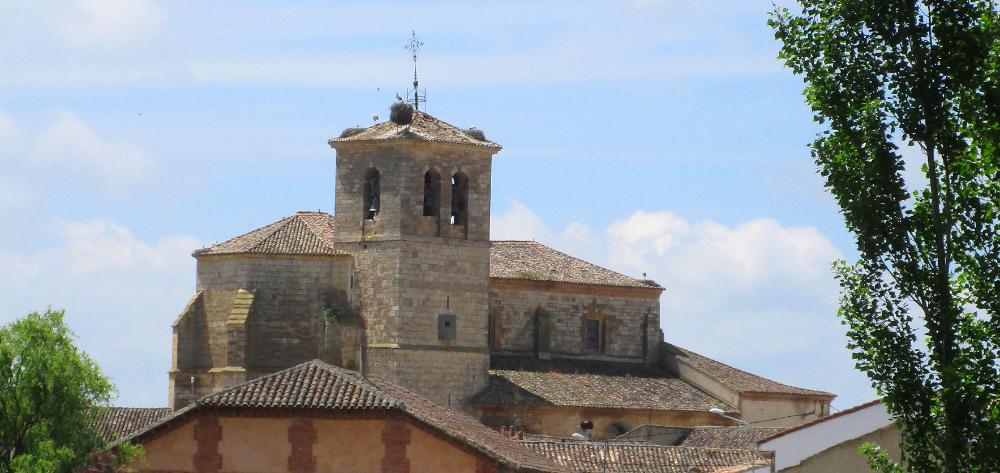
Where We Be
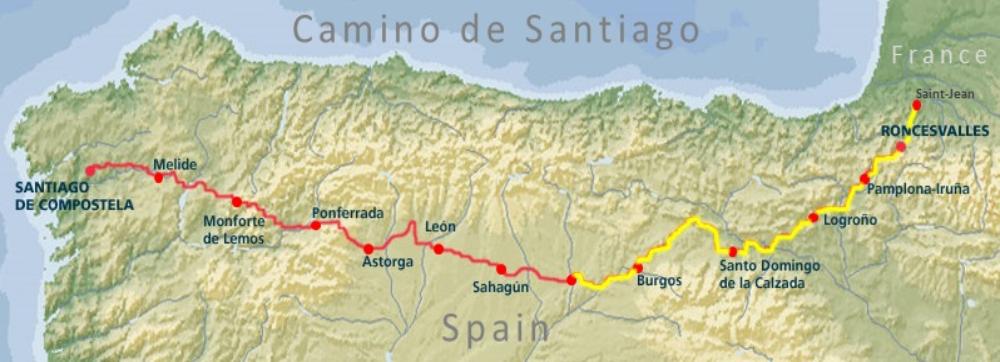
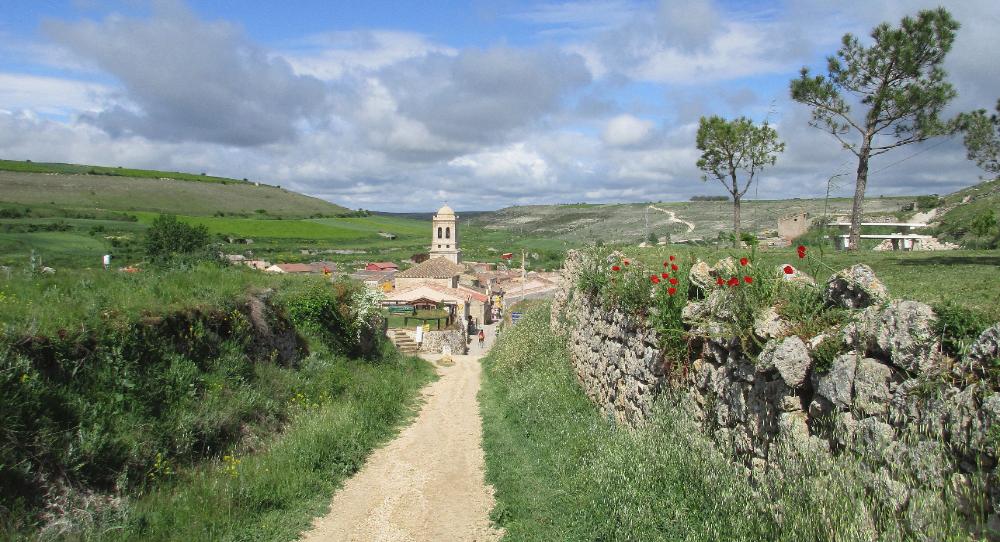
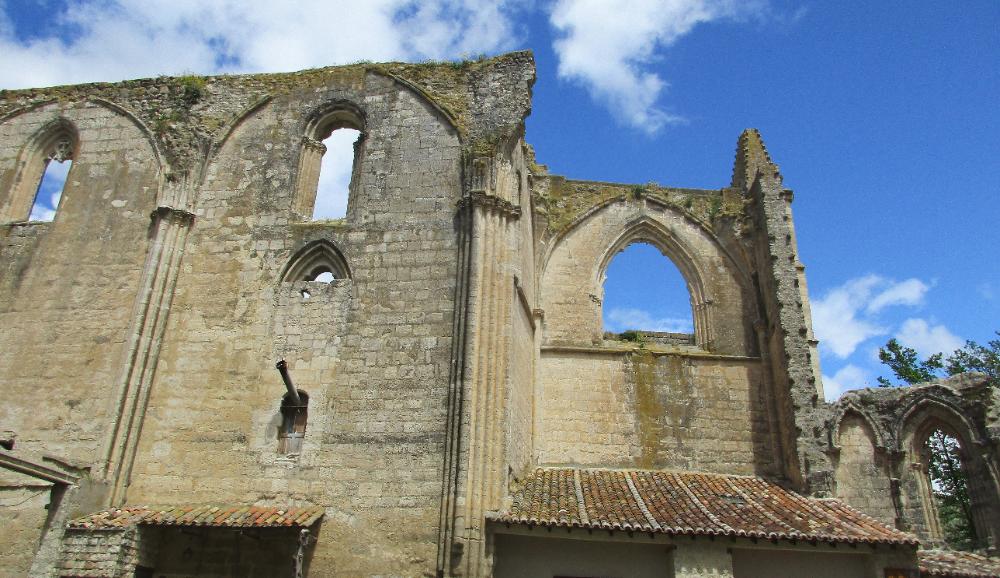
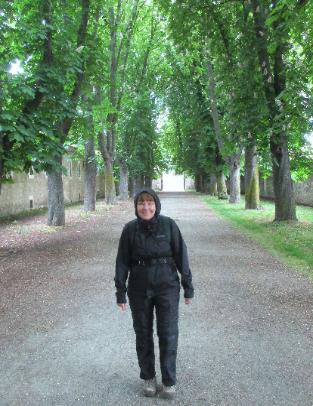
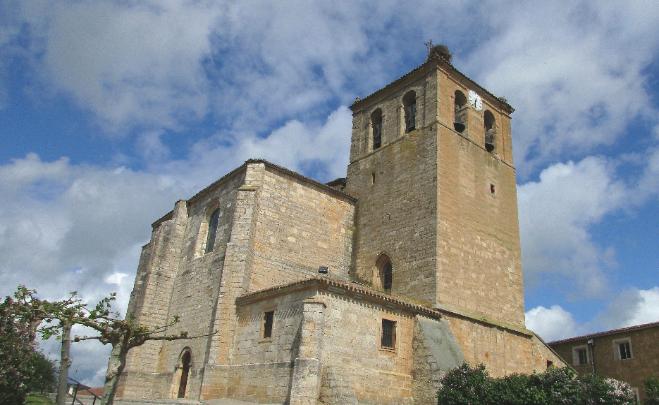
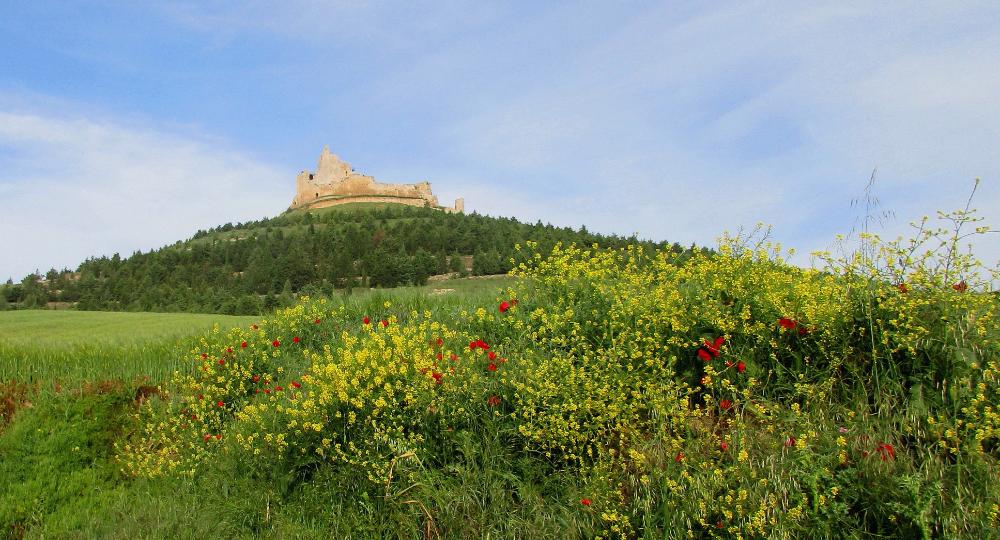
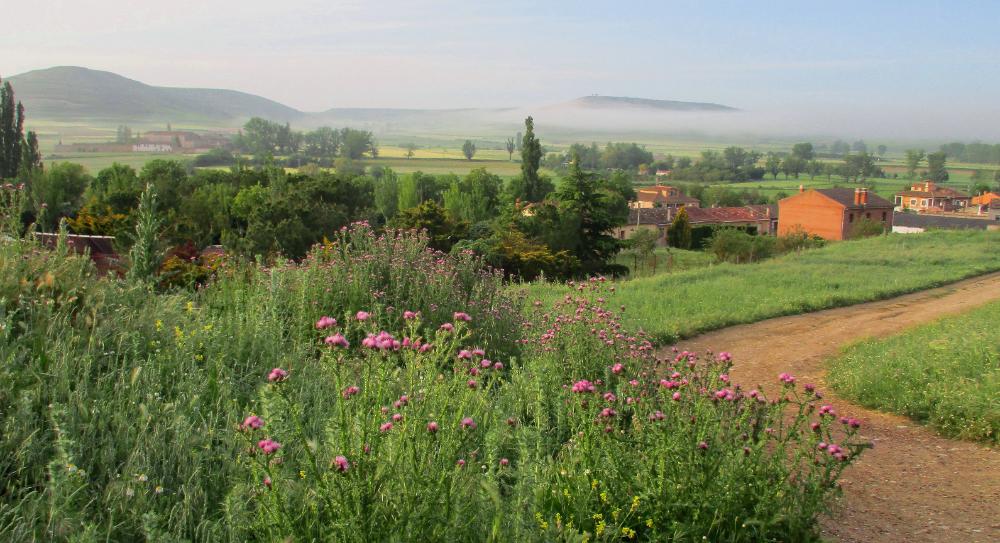
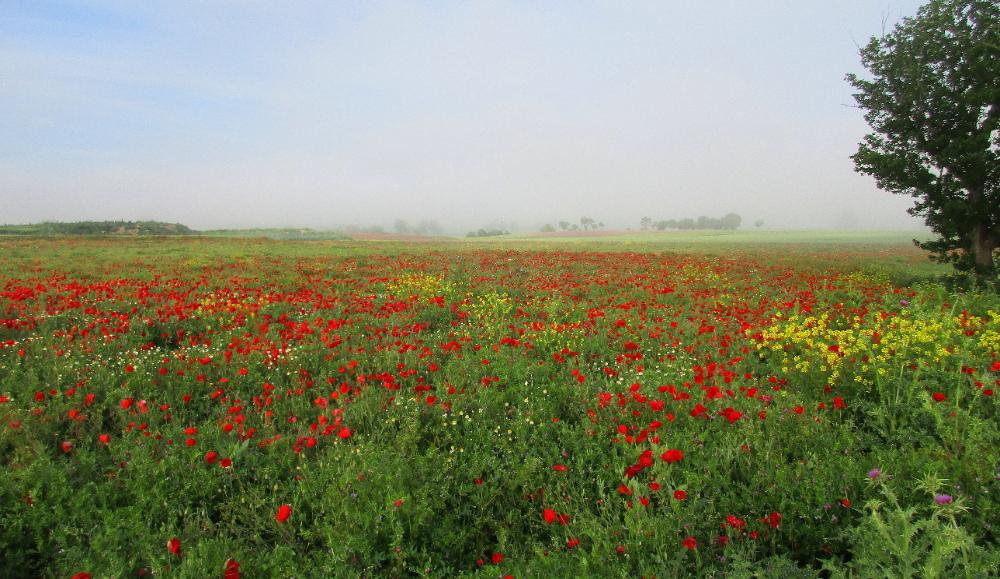
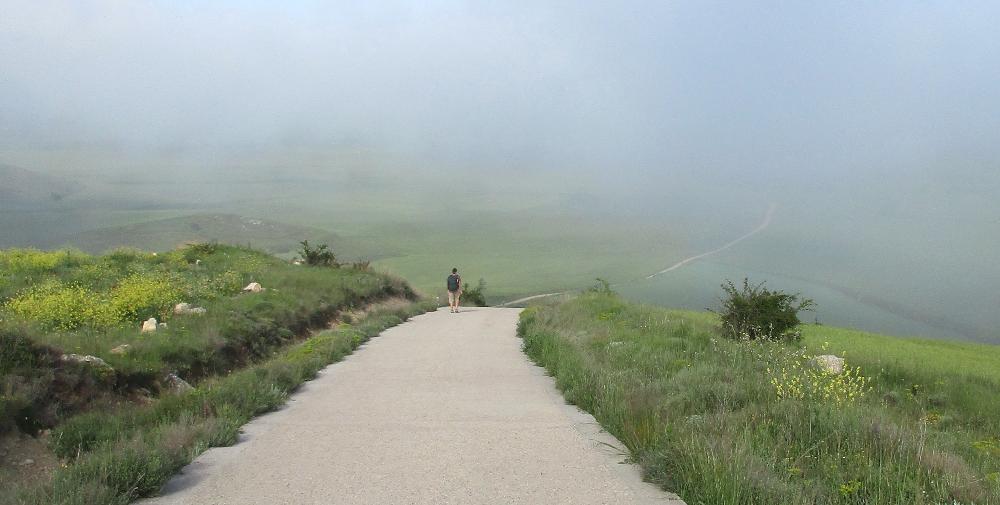
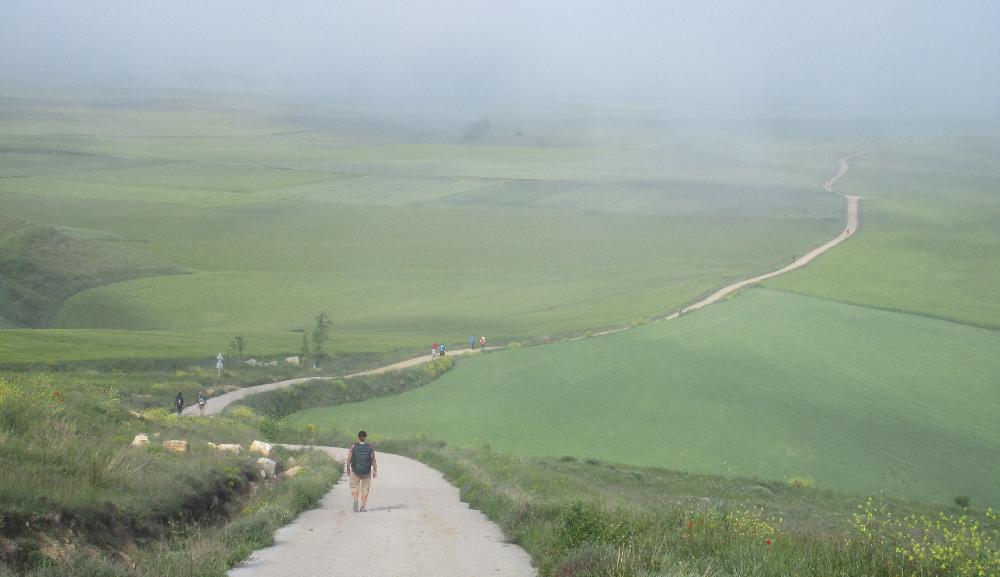
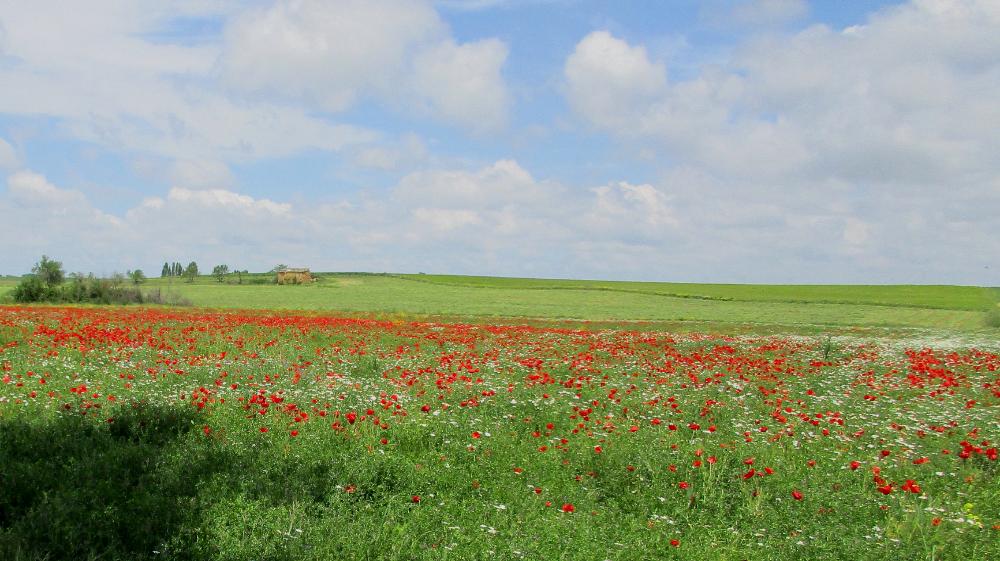
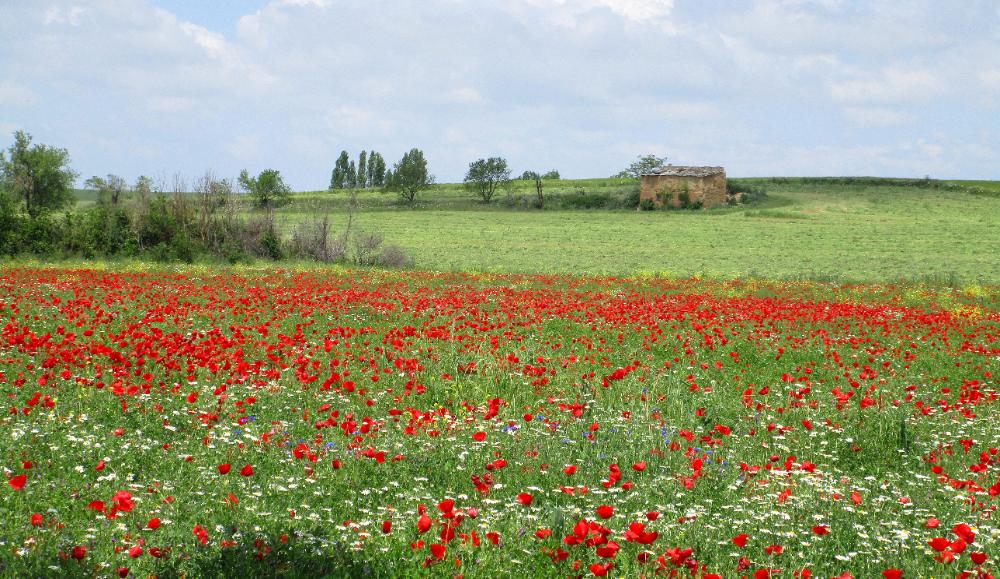
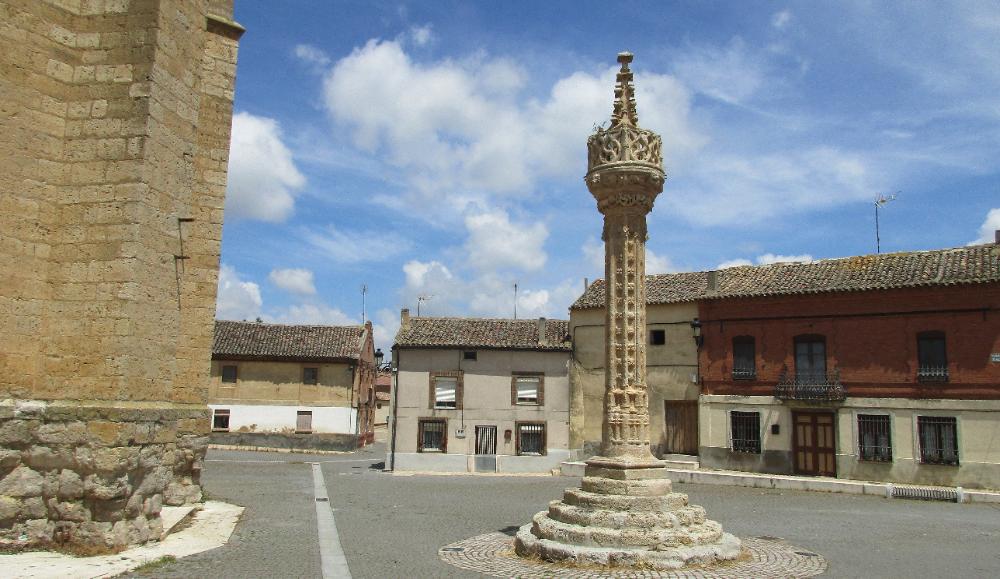
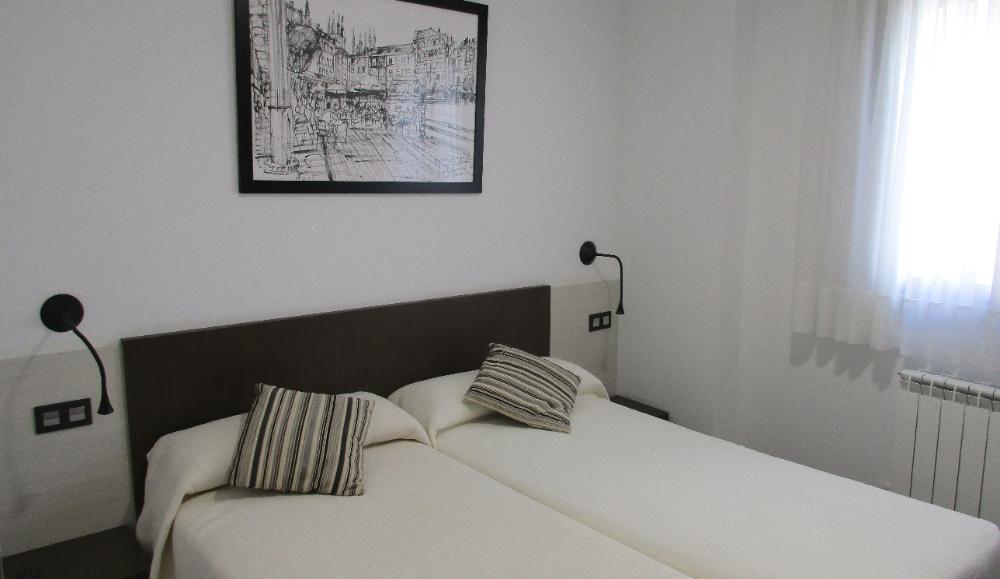
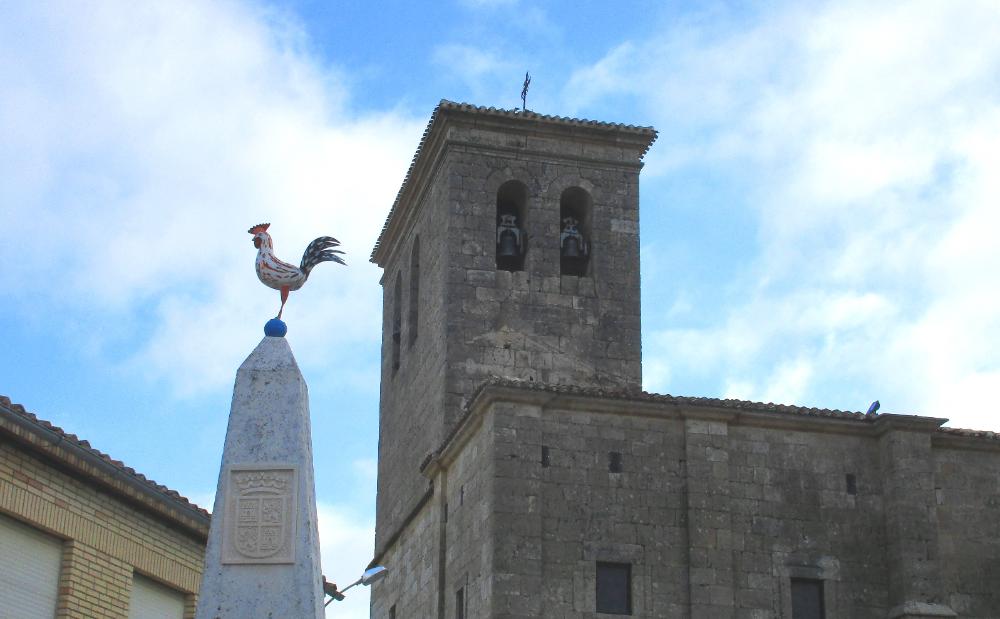
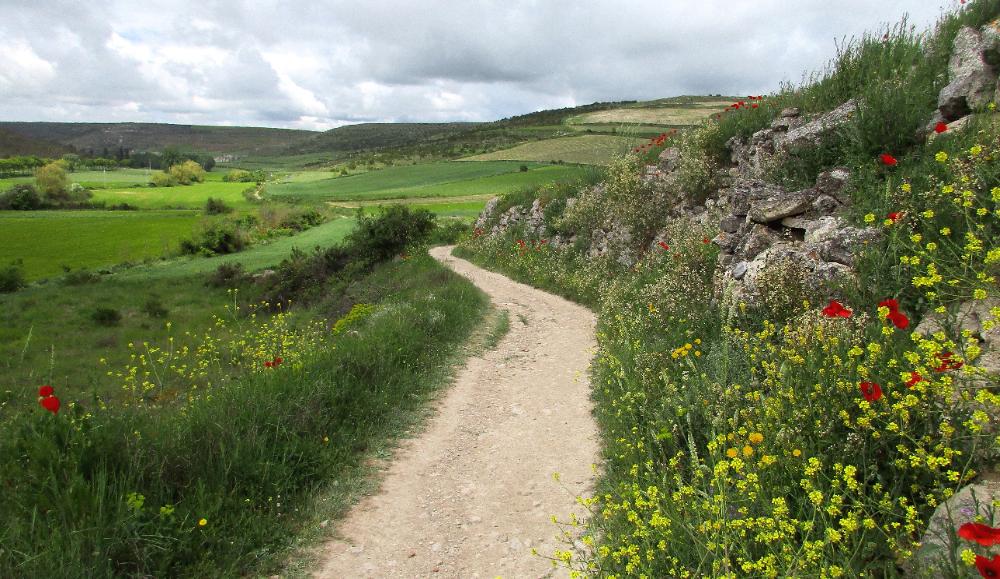
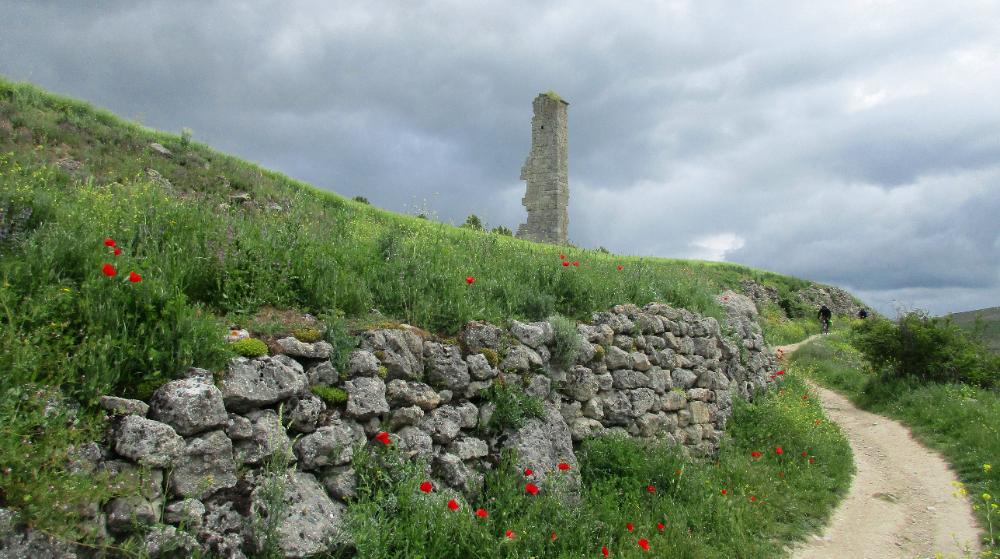
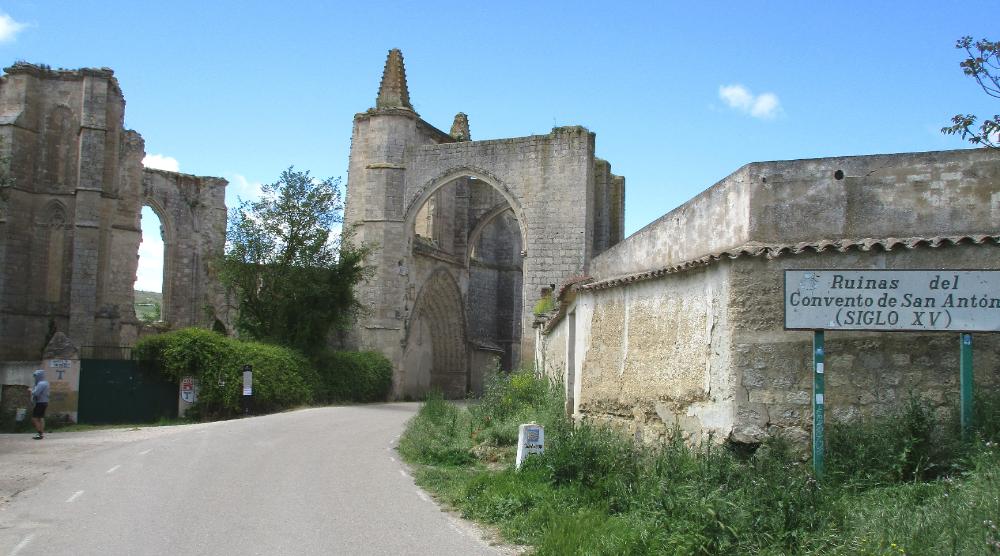
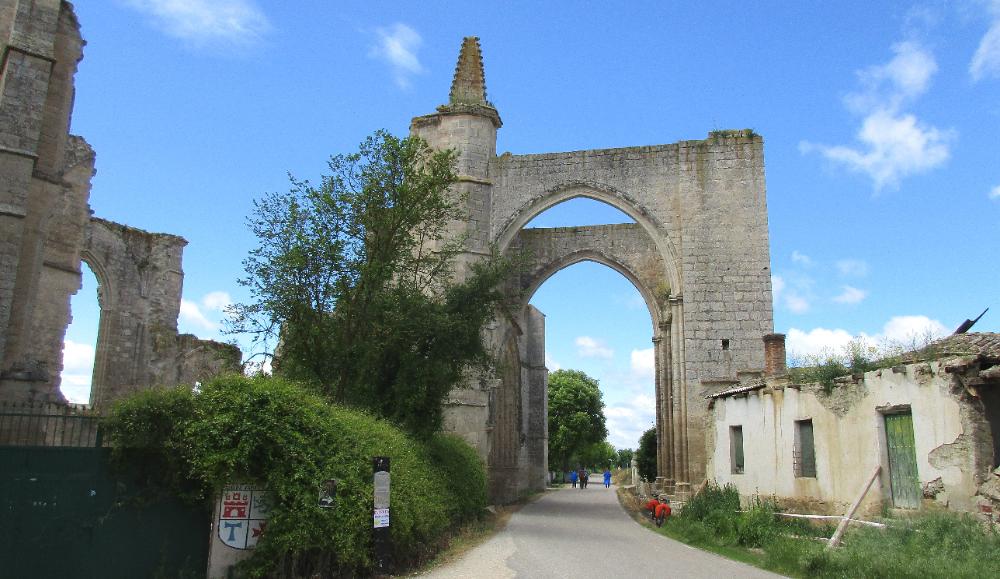
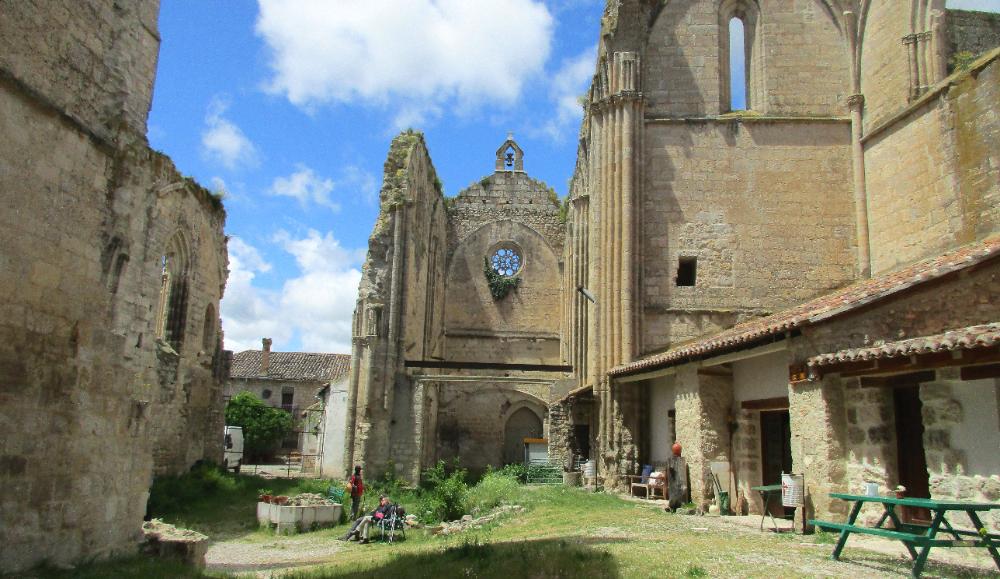
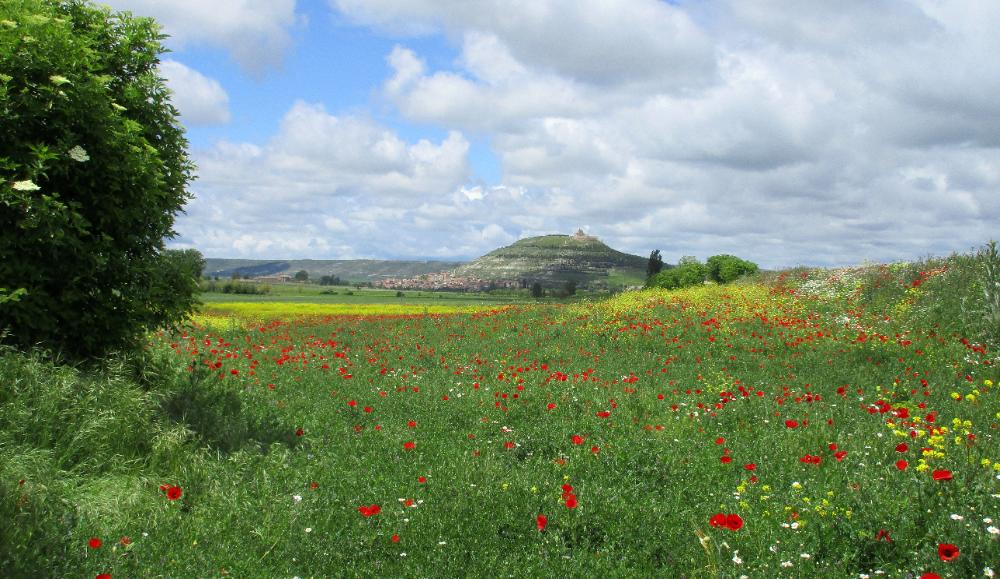
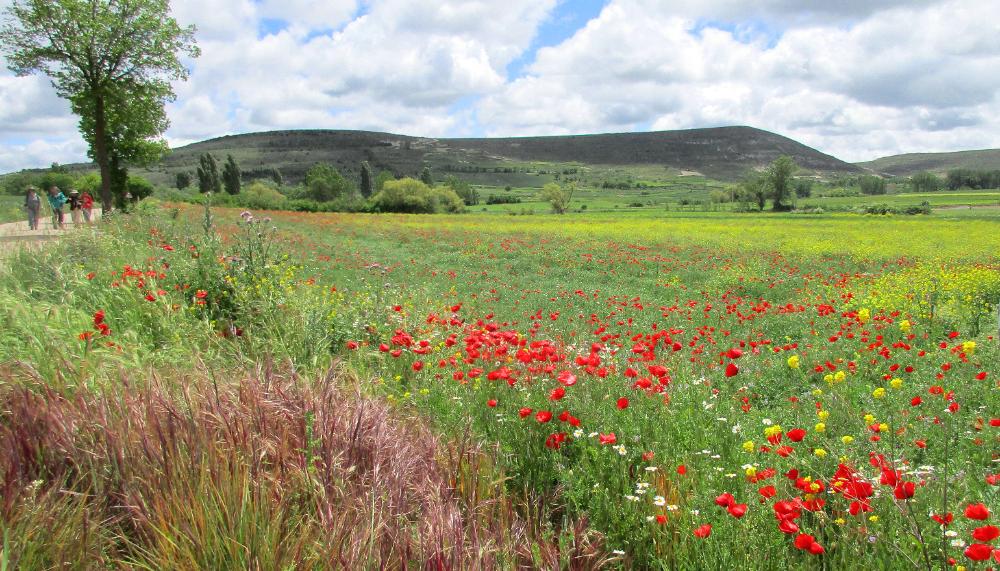
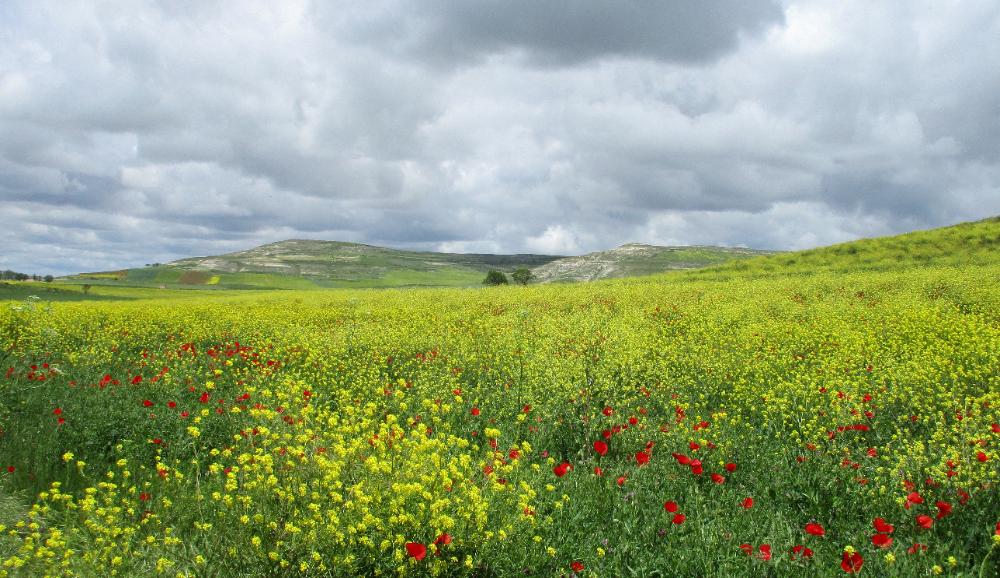
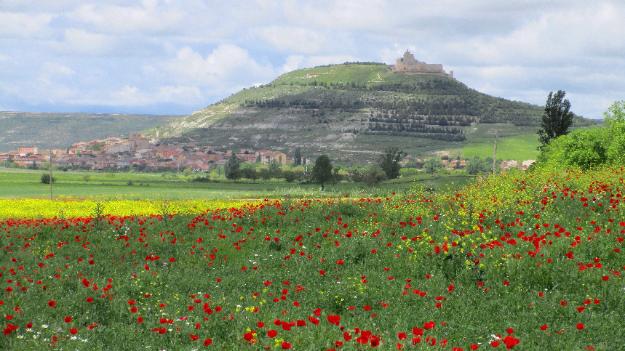
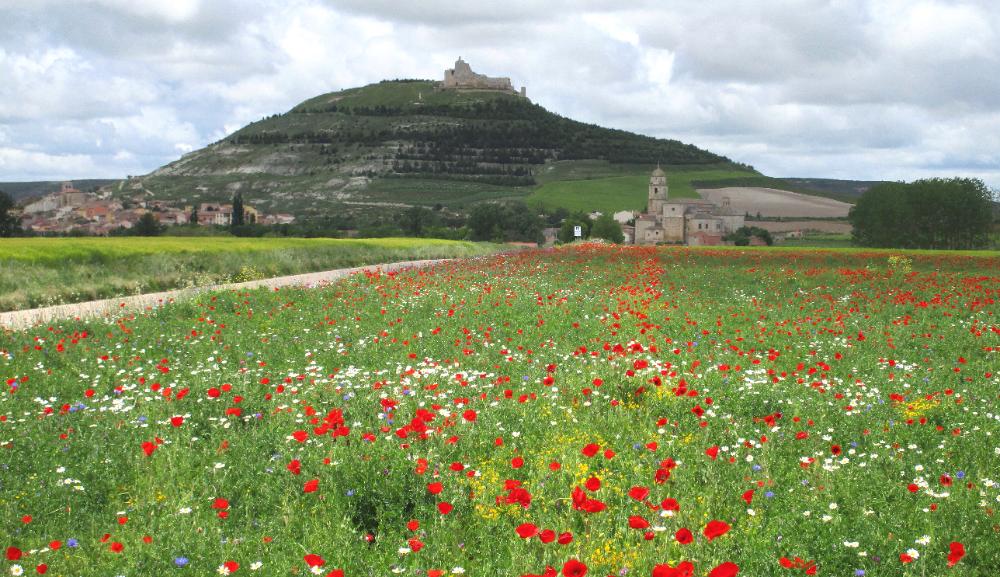
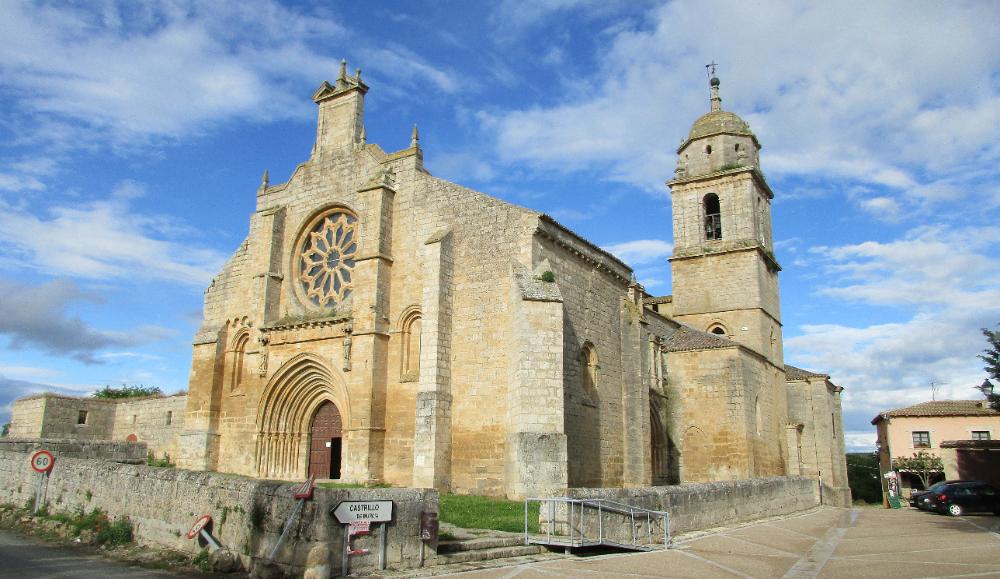
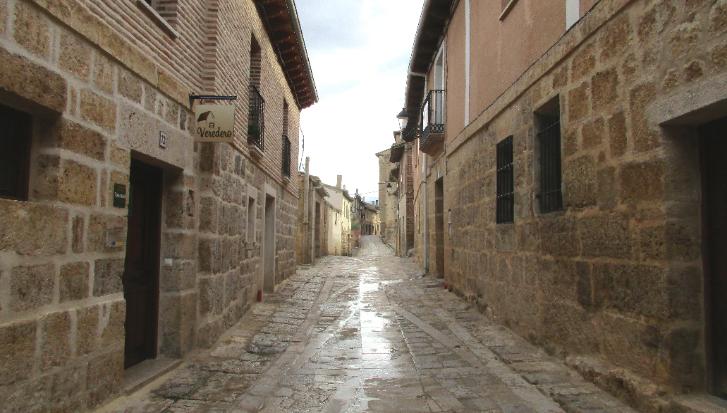
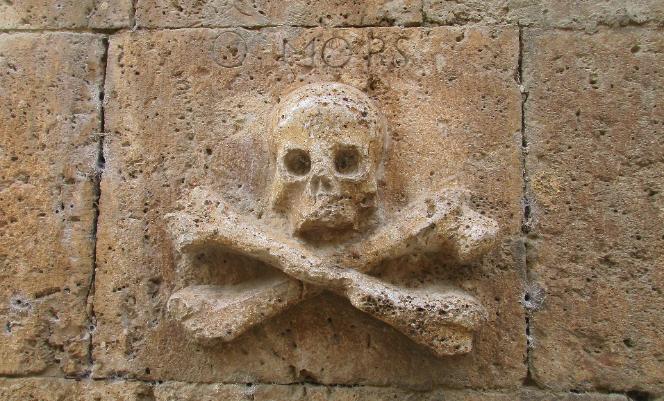
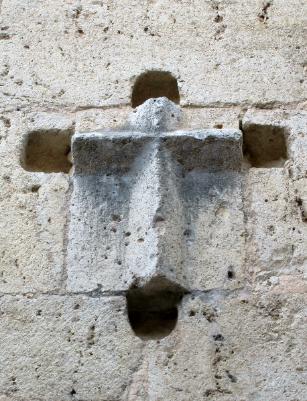
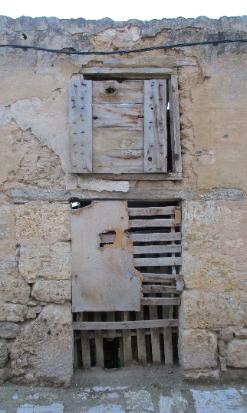
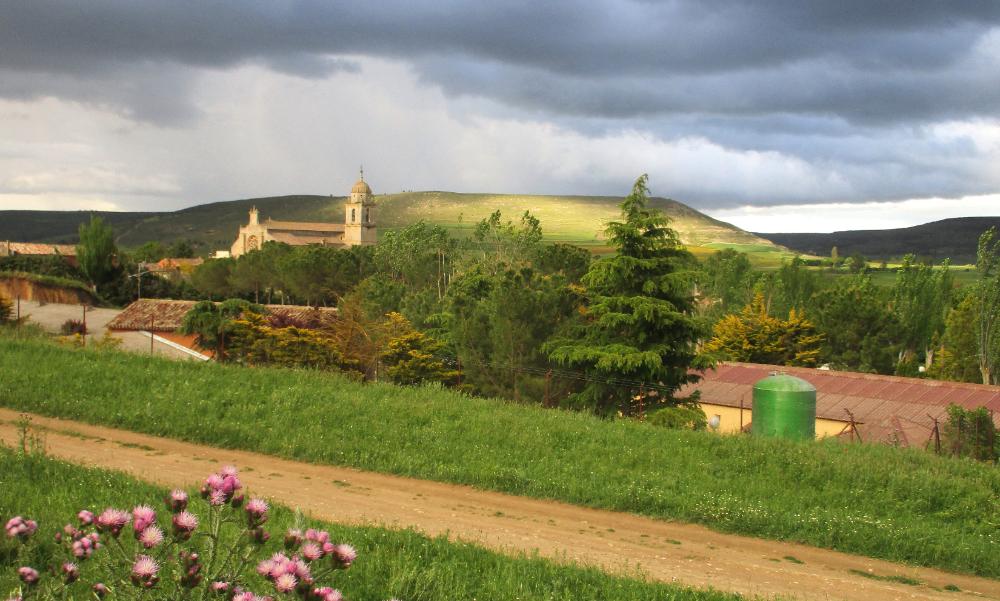
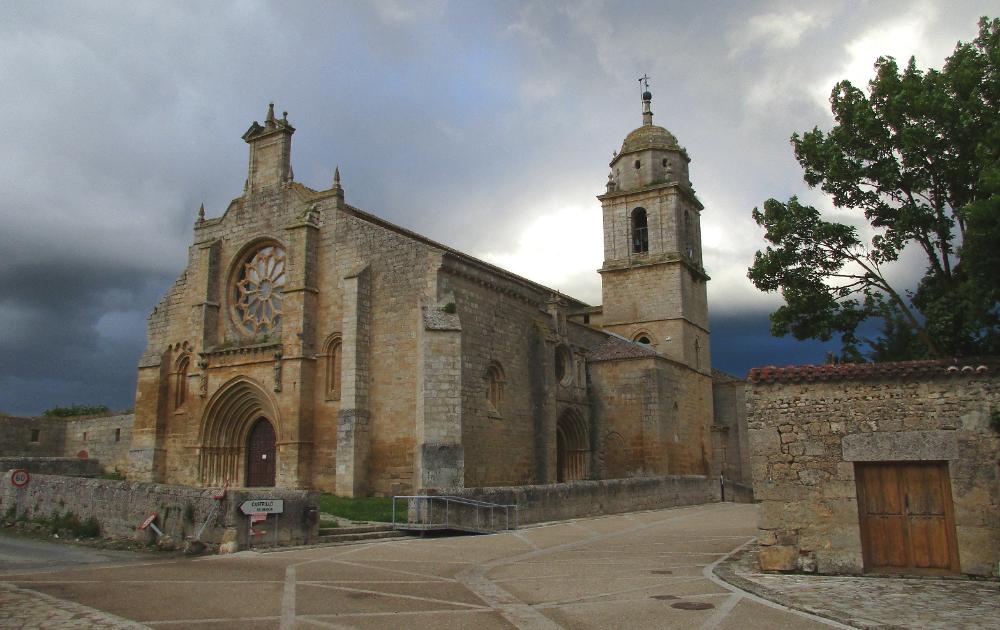
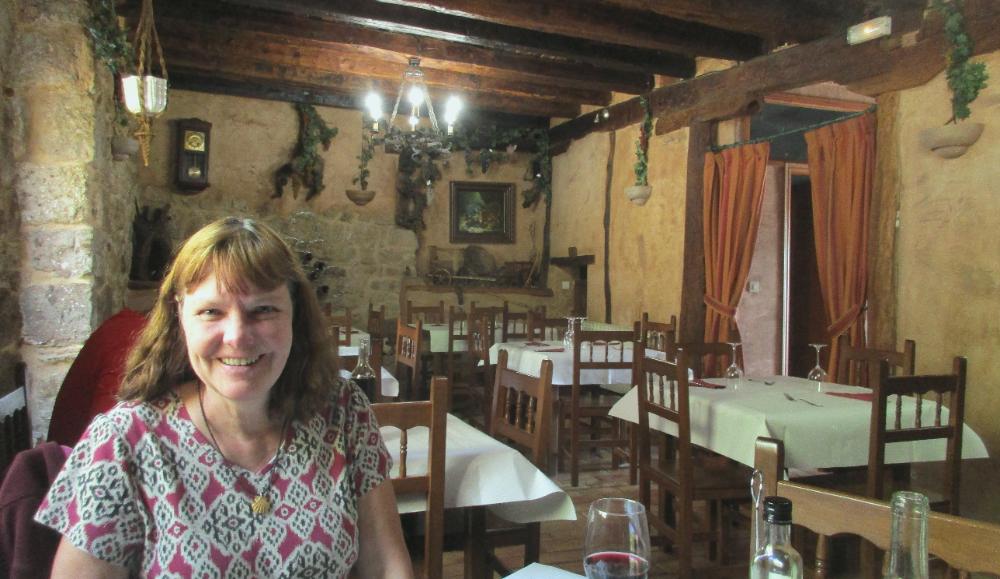
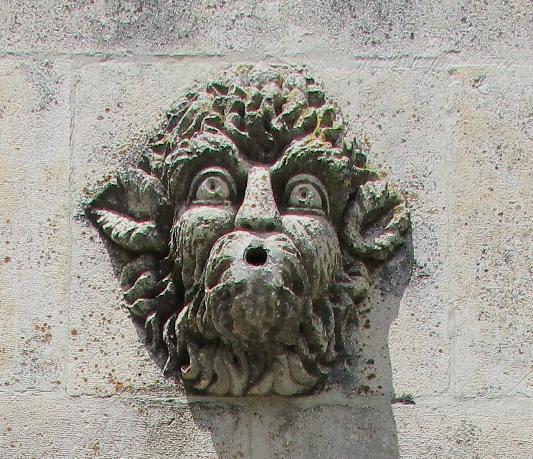
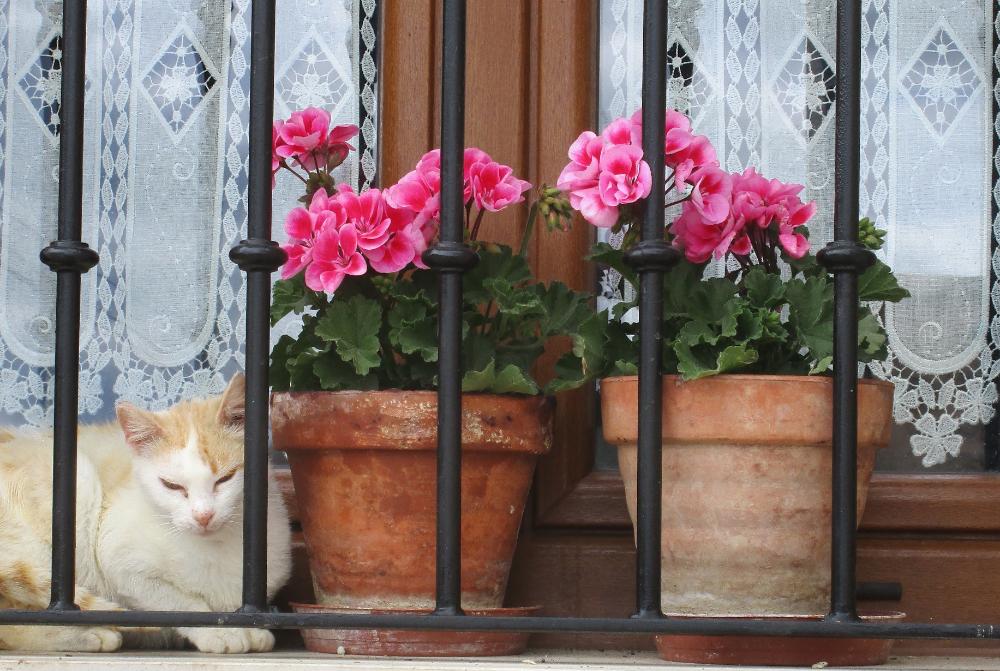
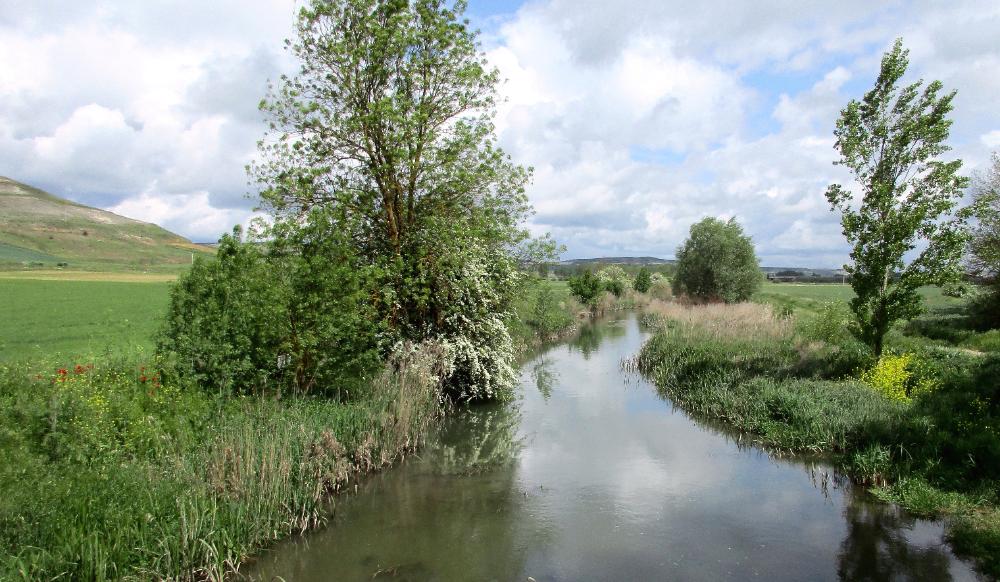
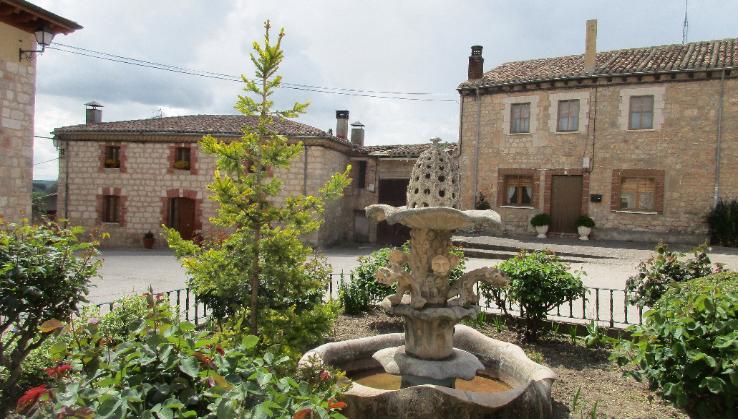
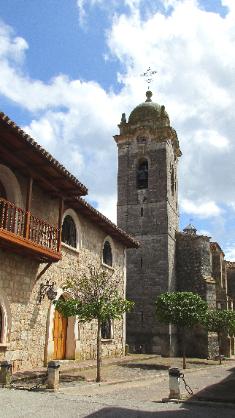
| The Meseta Begins |
Our albergue owner in Belorado confided in us,
only somewhat jokingly, that the only psych
ward along the Camino is in León, implying it’s
because the hike across the Meseta is so
boring people actually go crazy. Stuff like that
will prepare you for the worst, so imagine our
surprise when we ended up loving the Meseta
so much that the 3 hiking days covered here
were some of our favorite of the entire Camino.
We found the Meseta not boring but beautiful.
Of course the spring flowers made it especially
gorgeous, particularly when combined with the
dramatic lighting we were lucky enough to
witness. Never was this more true than on the
approach to Castrojeriz (shown left). Here the
wildflowers were simply stunning -- the perfect
foreground for the forbidding castle ruins that
loom over the town. And right at the entry to
town is the imposing Church of Santa Maria del
Manzano, another highlight of a visit here.
only somewhat jokingly, that the only psych
ward along the Camino is in León, implying it’s
because the hike across the Meseta is so
boring people actually go crazy. Stuff like that
will prepare you for the worst, so imagine our
surprise when we ended up loving the Meseta
so much that the 3 hiking days covered here
were some of our favorite of the entire Camino.
We found the Meseta not boring but beautiful.
Of course the spring flowers made it especially
gorgeous, particularly when combined with the
dramatic lighting we were lucky enough to
witness. Never was this more true than on the
approach to Castrojeriz (shown left). Here the
wildflowers were simply stunning -- the perfect
foreground for the forbidding castle ruins that
loom over the town. And right at the entry to
town is the imposing Church of Santa Maria del
Manzano, another highlight of a visit here.
| Castrojeriz was one of our favorite places on the whole Camino. Maybe if it were dubbed the wildflower capital of the Meseta it would get more press. |
| Heading out of town involved a very steep climb but afforded great views of the castle ruins atop the hill |
| We hiked about 12½ miles and once again were anything but bored by the scenery on the Meseta |
| The flowers continued to impress with their sheer abundance |
| I love this one! A lone hiker (Robin) walking along the Camino, the path stretching ahead of her until it disappears into the mist |
| This one, too, which reminds us just how far we still have to go |
| Doesn't this image remind you of an Impressionist painting? |
| This is perhaps my favorite photo of the entire Camino because 1) it looks like a painting, and 2) it captures a simple country scene, which is what so much of the Camino is about. Sure there are magnificent cathedrals and cities along the Way, but for us personally, the Camino is embodied in this rustic shepherd's shack in the midst of glorious nature. |
| We made it to Boadilla footsore but happy. Right outside the window of our hotel was the Church of Santa Maria with its five, yes, five storks’ nests on top. We could hear them clacking their bills repeatedly, very fast, as they courted. Unforgettable. |
| Also just outside is the Rollo de la Justicia, an ornate Gothic column symbolizing 15th century Boadilla's independence and their right to publically torture and hang their own criminals. Great. |
| En El Camino Hotel (€45, right next to the albergue by the same name) offers modern comforts in a small Camino town |
| The Rooster Fountain in Hornillos brings to light yet another Camino legend involving chickens. This one has to do with Napoleon's troops stealing chickens and smuggling them out of town in their drums. The soldiers denied everything, of course, but -- you guessed it -- one rooster miraculously came back to life and gave a mighty crow! |
| This 12-mile day was one of our favorite of the Camino. That's Hontanas up ahead, almost hidden until you hike right up to it. |
| The wildflowers are what made the day special. We can see where the same hike could be less interesting in another season, but in springtime it's beautiful. |
| These crumbling ruins west of Hontanas are all that remain of an ancient village |
| But more impressive ruins await: these are the 15th century ruins of the Convent of San Anton, and as one visitor put it, "Centuries of history are baked into its walls" |
| Picture a Gothic cathedral fallen into disrepair with no insides any more -- just the ruined outer walls, arches, and windows |
| The Camino de Santiago actually passes under the two arches of San Anton's portico -- how cool is that? |
| You can actually stay here if you're up for a rustic night of mattresses and candles. This was actually tempting to us because this place has such a special atmosphere. |
| That's Castrojeriz in the distance, with red poppies and yellow rapeseed putting on quite a spring display |
| During this stretch we hiked three days from Burgos to Boadilla, with distances as follows: 13 miles to Hornillos, 12 miles to Castrojeriz (with a rest day following), and 12½ miles to Boadilla |
| It was hard to make much forward progress with so much beauty all around |
| The view brought to mind a Bible verse: "Consider the lilies how they grow: they toil not, they spin not; and yet I say unto you, that Solomon in all his glory was not arrayed like one of these." (Luke 12:27) |
| Saint Mary of the Apple may strike you as a strange name for a church ("manzano" meaning apple), but it's said the Virgin Mary appeared one day by an apple tree and the church was built on the same spot beginning in 1214 |
| This is Santa Maria del Manzano from a different angle later the same day. We stayed at Manzano Hostel just to the right (double with private bath €35). |
| We think Castrojeriz would make a great setting for a novel. Frankly, the town feels haunted. The long street shown above is often deserted, and there are boarded-up buildings that exude creepiness at dusk. |
| Then there's the skull and crossbones -- on the church no less -- saying "O Mors," which is to say, "Oh Death" in Latin. Even that cross looks creepy to my eyes. |
| But then the sun comes out and the ghosts disappear. Castrojeriz: flower capital by day, ghost town by night. |
| Even the church could pass for haunted with those dark, forbidding storm clouds behind it |
| We particularly enjoyed our meal at La Taberna with its wood beamed ceiling and exposed stone walls |
| I'm not sure what to make of this carving but it creeps me out too |
| A cat finds a comfy spot to rest in a window garden in Castrojeriz |
| The sun had popped out by the time we reached the Church of Santa Maria de la Asunción in Tardajos |
| After a simple meal of tortillas with chorizo in Tardajos, we enjoyed a pleasant walk through the countryside |
| We paused for a water break in Rabe de las Calzadas (pop. 154). We love these small Spanish towns, which seem to be a Camino specialty! |
| This is the quaint hermitage on the outskirts of Rabe de las Calzadas (Ermita de Nuestra Senora de los Monasterios) |
| The final stretch on the way to Hornillos had a few ups and downs but was mostly flat |
| We should explain that the Meseta is the central plateau, or tableland, of Spain, so it's mostly flat by definition. With regard to the Camino it stretches from Burgos to Astorga. |
| But as you can see, flat is a relative term when you're walking -- there are still plenty of ups and downs along the way |
| Hiking Day 18: Burgos to Hornillos |
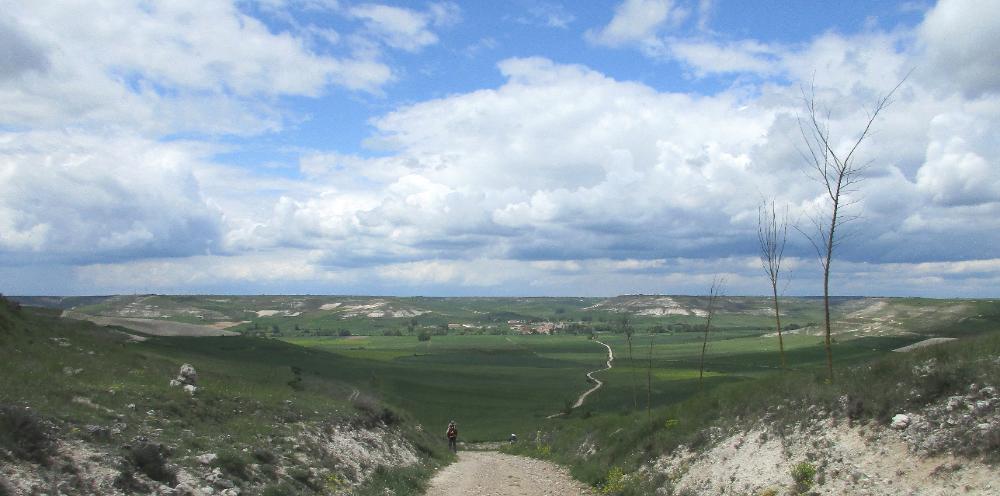
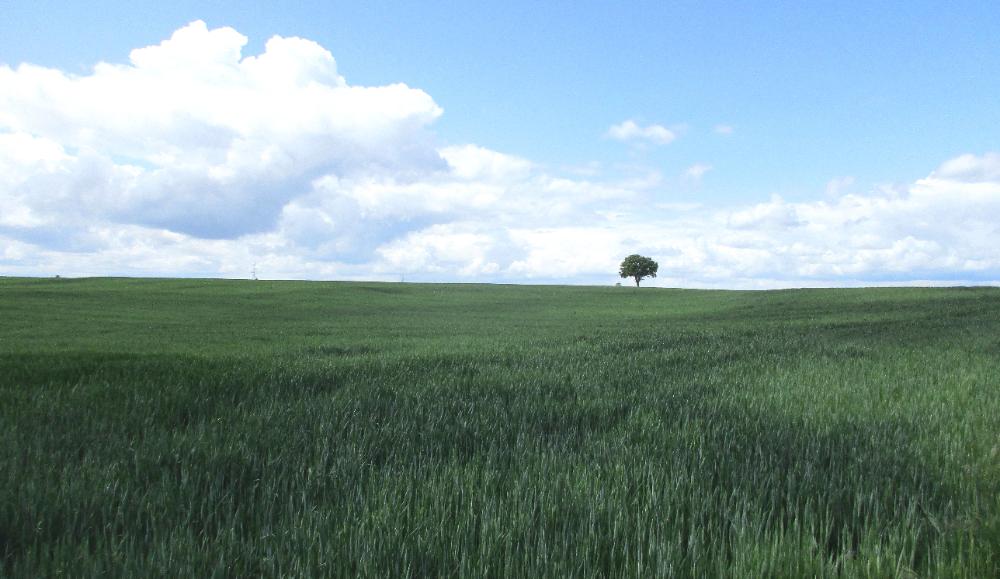
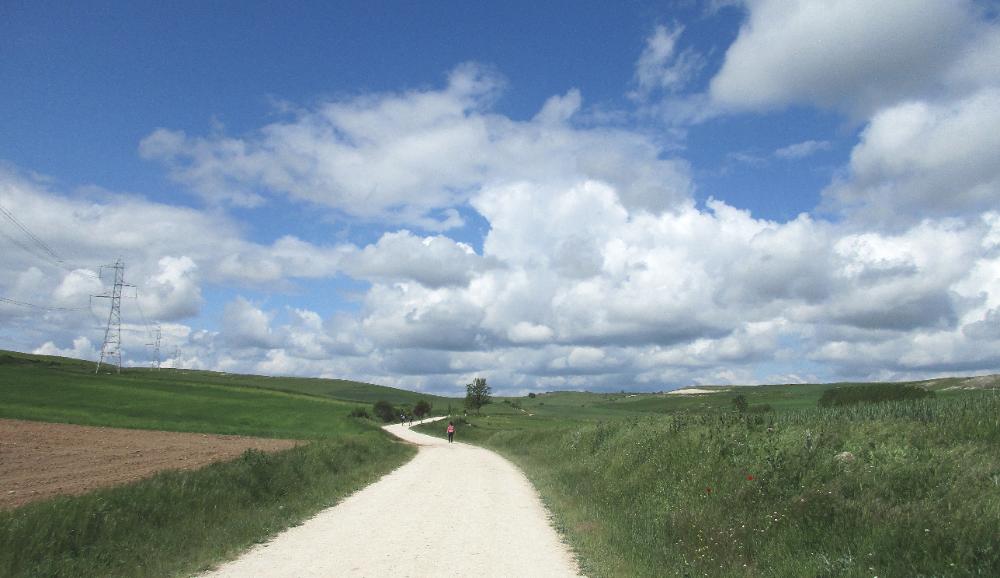
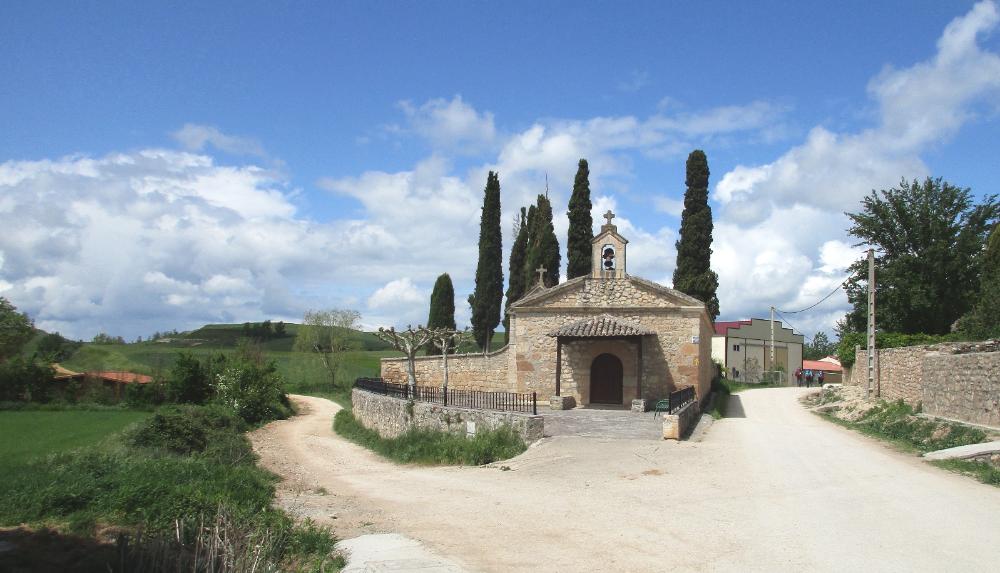
| Hiking Day 19: Hornillos to Castrojeriz |
| Hiking Day 20: Castrojeriz to Boadilla |
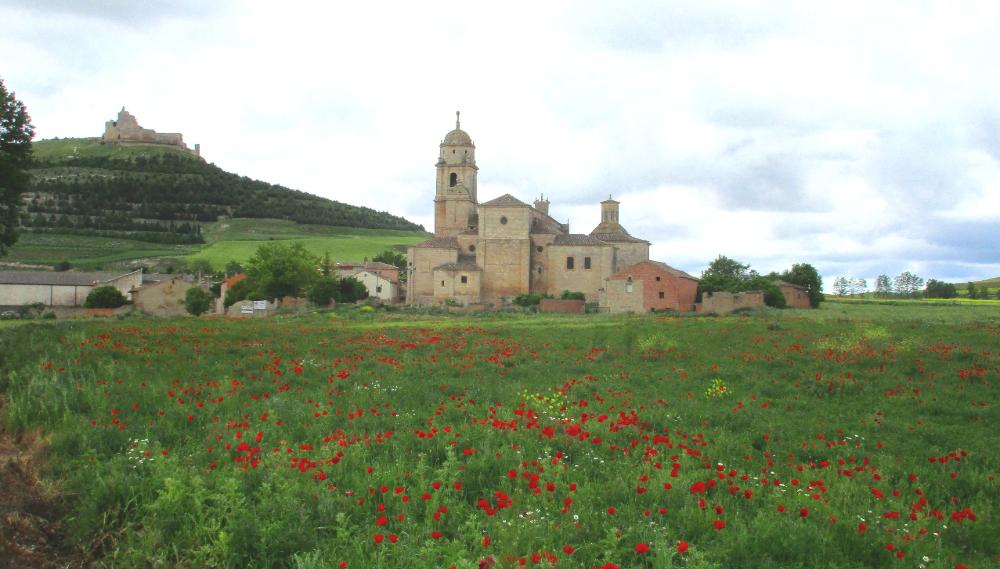
| Closer to Castrojeriz we could see both the Church of Santa Maria del Manzano and the castle ruins atop the hill |
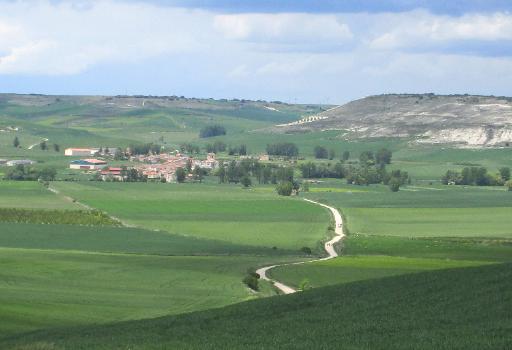
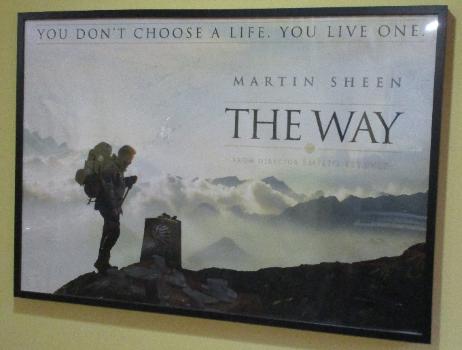
| Hornillos del Camino is a welcome sight in the distance |
| Movie poster for "The Way" at our casa rural, De Sol a Sol (€50) |
| We left Burgos in a drizzling rain but it didn't dampen our spirits |
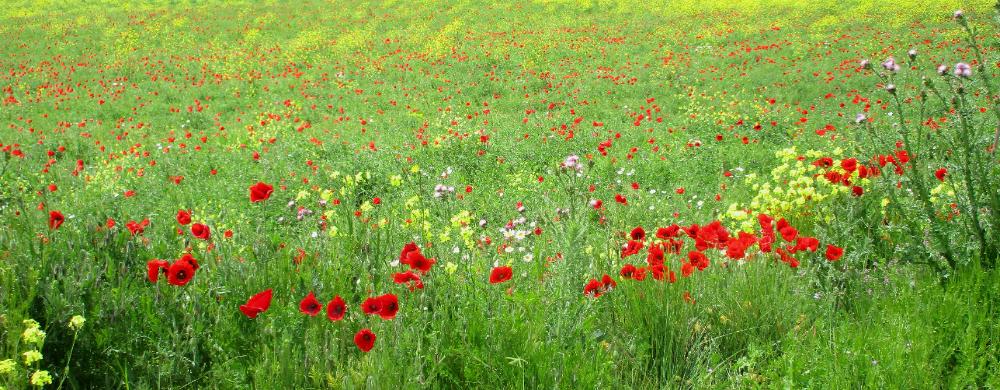
| My, my, my... |
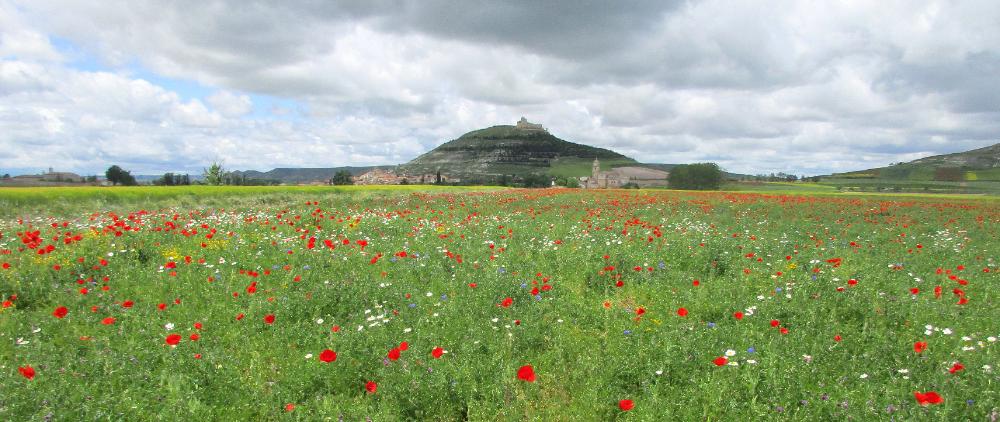
| We were both feeling euphoric by this point |
